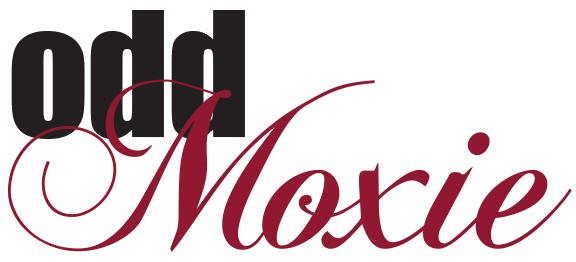Once upon a time, a business’s social relevance … wasn’t so important. If you had a poor experience, or didn’t like something about a company’s practices, the best solution was to start a rumor or report the company to the Better Business Bureau.
Today, a negative review of a company’s environmental practices can cost a company its reputation, at least in the short term.
So let’s take a look at what’s happened recently in the mad rush for social relevance.
Pirelli
Problem
Tire manufacturer Pirelli’s intent was to boost tire sales. Consultants no doubt convinced them that the best way to sell more tires was to make people really like the company. Maybe Pirelli realized that more women than men actually purchase tires. Pirelli settled on its low-hanging fruit, the calendar that for most of its 42 years has sported nude women.
So, on November 30, 2015, Pirelli announced that it had made a big change in its premier print piece.
The 2016 Pirelli calendar features a baker’s dozen of black and white portraits — “women of outstanding professional, social, cultural, sporting, and artistic accomplishment,” reads the press release. Tennis player Serena Williams is there, as is art collector and patroness Agnes Gund. Blogger and feminist Tavi Gevinson and rock star Patti Smith.
Infamous photographer Annie Liebovitz was mentioned in the press release’s second line, even before a description of the calendar. If you go to the website you’ll find Pirelli has a video about the piece.
The announcement was carefully crafted to make us forget about the previous half-century of car chicks. And the announcement was clearly a sign that Pirelli wanted to be more socially relevant.
Fly in the tire ointment
These photographs started some serious conversations.
Why was Yoko Ono snapped as a cabaret MC in shorty shorts? Was it her choice to show off her legs?
And what’s up with the barely covered model Natalia Vodianova and her naked baby? Comedienne and writer Amy Schumer was nearly completely nude.
Four women removed some of their clothing, but none is completely naked. Says Liebovitz, “I wanted the pictures to show the women exactly as they are, with no pretense.” But is one person’s lack of pretense another’s nudie calendar?
The Huffington Post (“Progress or Exploitation: What the Photos Say”) explored why these pictures may not really show the women exactly as they are.
The Huff story’s opinion is that the photos still objectify women. And are confusing.
Huff writer Margaret Gardiner concluded by saying that change is change when it’s no longer noteworthy. When we’ve passed a milestone and are no longer noting the change, then we have change.
The conceit of these photographs became about the photo studio itself — its backdrops, lighting, walls, all of it. These women could have been photographed in their homes, doing their work, with their families or clients or tools of the trade.
But someone thought that these women needed to present a level playing field. That comparing one’s mansion to another’s rent-controlled flat as a background would be unfair. Or too complicated to execute.
In the end, the women themselves were for the most part conventionally attractive. They were shot by one of America’s most famous photographers, in a highly stylized way that divorces them from their environment, far from their accomplishments.
So how much has changed?
But was it a success?
The calendar been applauded far and wide. But not all of the press was good. The public discussion has sparked some heated discussion about photography, women, and objectification, and that’s almost always a good thing.
I Love Ugly
I Love Ugly sought social relevance by shooting naked women whose private parts were covered by men’s hands.
The images probably did raise the bar for social relevance vis a vis nudie calendars. The photography, costuming (cowboy shirts, mostly), and men’s jewelry created a tactile effect that few marketing photographs achieve.
The calendar announcement, made the day after Pirelli’s calendar release, drew immediate fire.
Rae Duff, president for the National Council of Women for New Zealand, blasted the campaign: “[The calendar] reflects how too often women in our society are seen as merely sexual objects and this feeds into our culture of abuse and violence against women. As a brand that targets young men, they should be doing more to promote healthy attitudes.”
But were I Love Ugly’s pics reflecting relations with consenting adults? I believe there’s an argument that the calendar does not promote a culture of abuse and violence against women any more than Pirelli’s new calendar does.
Does skin sell?
There’s still plenty of beef- and cheesecake in advertising. Look at Dolce & Gabbana’s print ads. A sinewy, tanned, shirtless man drifting around in a rowboat in the middle of a Mediterranean bay is a sex object, isn’t he?
Perhaps I Love Ugly could have avoided showing women’s nipples, but I’m still not sure the company has done anything worse than Snickers, Tom Ford for Men, or Budweiser, among others.
- Snickers ad that suggests eating chocolate will help you remove your girlfriend’s bra.
- Compare this phallic, breastacular Tom Ford ad to I Love Ugly’s ad, which boosted sales of Tom Ford for Men cologne.
- Photography marketing has always had a thing for ta-tas.
- Breasts seemed to sell Bud Light Lime, with the help of Arlanny Celeste.
- And of course there’s Hooters.
A recent study in Advertising & Society Review found that 20 percent of all magazine and web ads use sexual images, although it’s debatable whether the use of breasts in advertising actually help or hinder sales, because people (61 percent) can’t seem to recall the brand that used them.
Et tu, Playboy?
Yes, Playboy has been cleaning house as well.
Even though the magazine has historically carried some of the magazine world’s most astute editorial content, its name had become synonymous with pornography.
In October 2015, Playboy — the world’s most famous nudie magazine — pledged to end nudity on its pages. Even the centerfold.
Why do companies make the decisions they do?
We always have to follow the money.
Playboy used to circulate 5.6 million but circulation today is less than 100,000. Its target audience was men in their late 40s, but after its redesign without nudity, the average dropped to 30. Plus, its web traffic zoomed from four million to about 16 million unique users each month.
Just one small change has made the magazine more relevant to a broader audience. Plus, its cover won’t have to be hidden on the newsstands.
Mattel
How could Barbie, the classic icon of cheesecake, objectification, and subservience, be socially relevant?
If it’s the likeness of the award-winning filmmaker of the Oscar-nominated “Selma,” Ava DuVernay.
Mattel released this latest Barbie installment on December 7, 2015. The dolls were sold out on both Mattel’s and Amazon’s sites within 17 minutes. Each doll came with her own director’s chair.


































